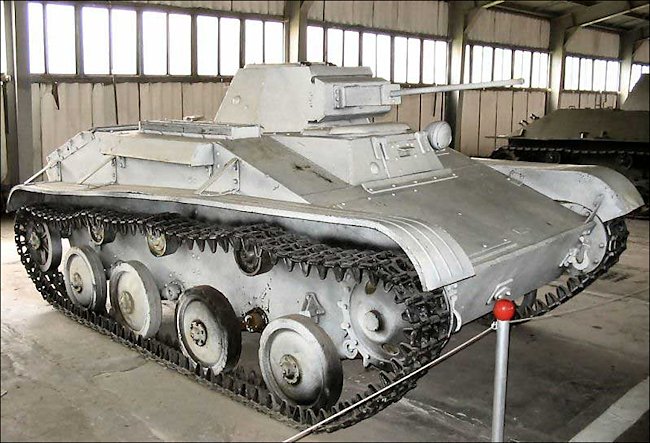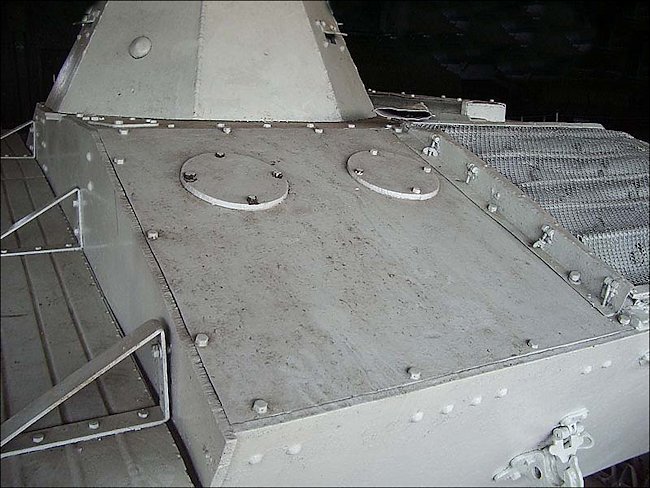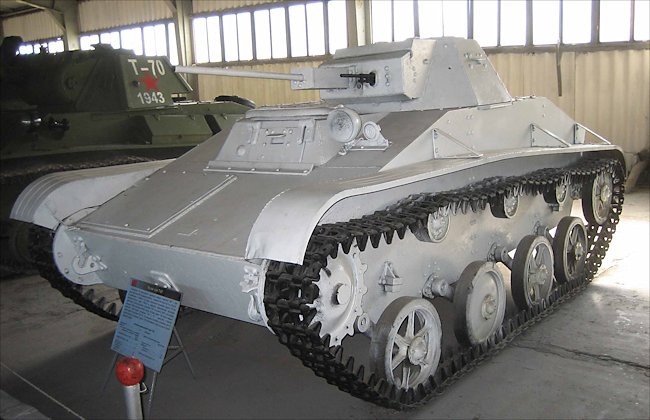The T-60 Scout Tank
The T-60 Soviet light tank was produced in large numbers in response to the German 1941 Operation Barbarossa, the invasion of Russia. This restored tank can be found at the Kubinka Tank Museum near Moscow, Russia.

T-60 Red Army WW2 Scout Tank can be found at the Kubinka Tank Museum in Russia
Location
Take the train from Moscow's Belorusskaya Railway Station, in the north west of the city, to Kubinka. It is about an hours train journey. It is a direct service, no need to change, and the the tickets are cheap. Make sure you print off a list of station names so you can check off where you are and get ready to get off the train at Kubinka. The station names are not always easy to read or see.
Although this military town has been active for over 80 years it has a rundown look to it. You can walk to the museum but there is the equivalent of a motorway crossing your route. There are no pedestrian crossings over it. There are a number of taxi stands near the station. They are very cheap and honest. I tried to give the driver a big tip but he refused. Ask for his card so you can ask the Museum gate staff to call his company when you are finished at the Museum to get back to the railway station.
Development
Before it even entered service it was obsolete as a front line tank that was to engage enemy tanks like the recently upgraded Panzer III and IV tanks. At all costs it had to avoid contact with these new and improved enemy machines. It would not be a fair fight because its 20mm TNSh main gun could not penetrate their frontal armour.
It could only penetrate 15mm of armour at 500m. German armour ranged from 30 mm to 50 mm at that time. The T-60's armour plating offered no protection from enemy 50mm and 75mm shells. It was just too thin. It only offered protection from small arms fire.
When it was used against German infantry and soft skinned vehicles it was effective. As the Germans advanced towards Moscow the crops in the surrounding countryside were at their full height. It helped screen the small low profile T-60 tanks. This enabled some of the tank crews to sneak close undetected and engage German infantry units and cause serious amounts of casualties.

Rear view of a T-60 turret in winter camouflage
Major-General M.E. Katukov stated in an interview 'In this fateful hour, when the Germans had almost defeated us, those ridiculous tanks saved our positions. It was lucky that the rye in the area was almost a meter high, as the T-60s were hidden by it. Using the rye field, both of our T-60 tanks were able to infiltrate the rear of German infantry and open fire on them. After several minutes of intense fire, the German attack was halted.'
The T-60 tank designer was Nicholas Astrov and they were manufactured between 1941 to 1942 at Factory 37,Moscow, GAZ, Gorkiy and later Factory 38 Kirov. It is believed that 6,292 tanks were produced during that period. This light tank weighed 5.8 tonnes and was powered by a GAZ - 202 cylinder engine that produced 70 bhp. It had a top road speed of 44 km/h and 22 km/h off road.
It was fitted with a 7.62 coaxial DT machine gun in addition to the 20mm main gun. It had a large fuel tank of 320 litres and a good operational range of 450km. This enabled it to remain with infantry units without having to constantly return to be refuelled. It enhanced its abilities as a scout tank. It could go on patrol looking for the enemy knowing that it had enough fuel to return back to Regimental headquarters with its report.

T-60 Soviet Light Tank Armed with a 20 mm main gun and a 7.62 coaxial DT machine gun
It was introduced into the Red Army as a replacement for the T-38 and T-40A amphibious scout tanks T-40S Sukhoputniy 'dry-land' light tank. They were only armed with a 12.7 mm machine gun. The T-60 was the Russian equivalent to the German Panzer II tank. In armoured combat or when they were spotted by anti-tank guns, many were knocked out causing the death or injury of the crew.
This earnt the T60 tank the nickname of Bratskaya Mogila na Dovoikh which means 'A grave for two brothers'. In 1942 the frontal armour of the T-60 was increased from 25mm to 35mm but this was still too thin. The engine could not cope very well with the extra weight. It became even more sluggish and less manoeuvrable than it already was before the additional protection was applied to the vehicle.
Where can I find surviving T-60 Scout Tanks?
- T-60 - Finnish Armour Museum, Parola, Finland
- T-60 - Kubinka Tank Museum, Russia
- T-60 - Volgograd, Volgograd Oblast, Russia
- T-60 - Samara, Samara Oblast, Russia
- T-60 - Igor Shishkin Collection, Russia
- T-60 - Museum of military equipment 'Battle Glory of the Urals', Verkhnyaya Pyshma, Sverdlovsk Oblast, Russia
- T-60 - Gluboky, Rostov Oblast, Russia
- T-60 - Museum of the National Military History, Padikovo, Moscow Oblast , Russia
- T-60 - x6 Vadim Zadorozhny Museum, Arhangelskoe Moscow Oblast, Russia
- Source - Pierre-Oliver Buan - http://the.shadock.free.fr/Surviving_Panzers.html
Tank books

